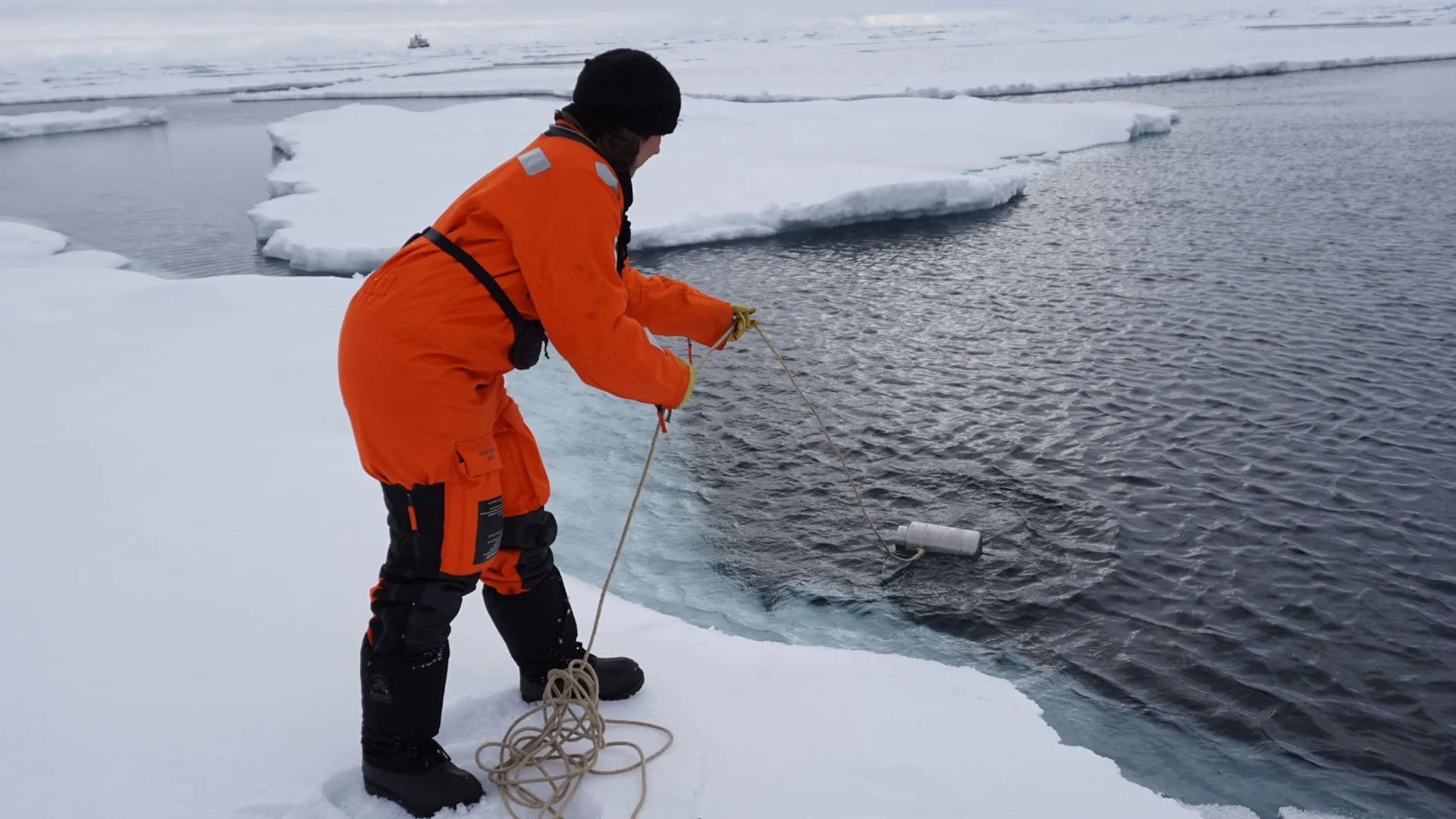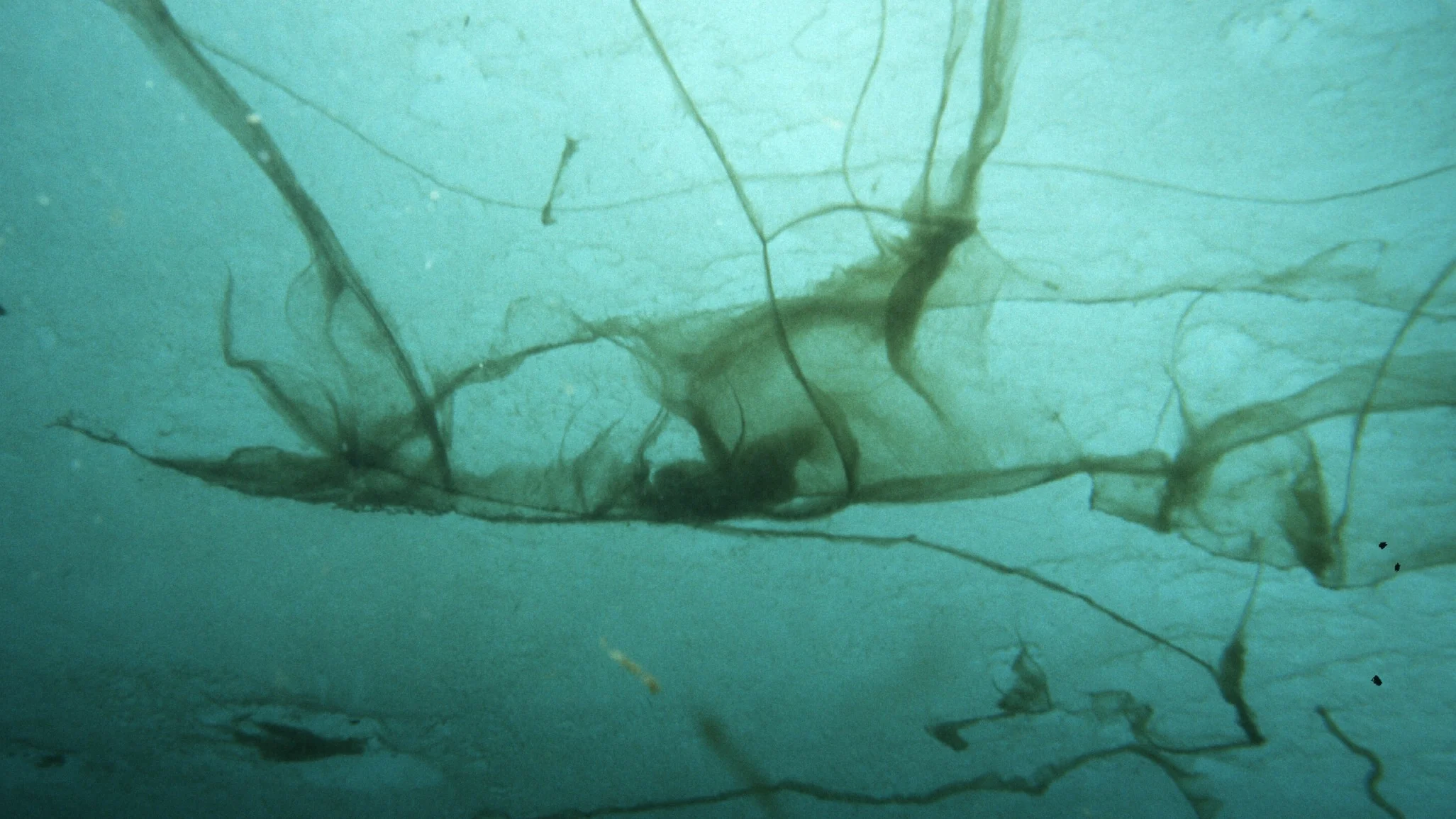
A gross but vital Arctic algae has (surprise!) microplastics in it
Researchers found melosira arctica samples have 10 times the amount of microplastics compared to the surrounding environment. That’s bad news for the region’s species and carbon cycle.
Beyond showing up in food, human blood, in the air surrounding remote research stations, at the bottom of the ocean, and many other unexpected places, microplastics are now showing up in Arctic algae.
The Arctic is no stranger to microplastics. But now, new research found that the minuscule shards of plastic appear in high concentrations in the goopy webs of the algae melosira arctica, which grows on the bottom of sea ice.
The algae looks “like the texture of the stuff is like it's like bulldog drool, or snot or silicone,” Deone Allen, one of the paper’s authors and a research fellow at the University of Birmingham’s department of geography, earth, and environmental sciences, told The Weather Network.

Tiny shards of microplastics seen in the arctic algae species melosira arctica, found off the east coast of Greenland in 2021. (Supplied by Alexandra Kraberg)
Despite its unappetizing appearance, the algae plays an important role in the arctic ecosystem and how it sequesters carbon.
Around two years ago, Allen and a team of other researchers took an icebreaker vessel east of Greenland. There, Allen and her colleagues collected samples from three sites, functionally “scooping the equivalent of green snot” out of the sea.
They then took the samples back to a sterile lab to test for the amounts and types of plastics in the algae. They had to handle these samples carefully, as there’s no easy way for them to collect more.
“It's nearly impossible to get, you know. Like this is not replaceable,” she said.
Additionally, changes in temperature or the presence of some chemicals could damage or change the plastics within them, which would give them faulty results. As such, the team carefully cleared the algae out of the samples using hydrogen peroxide. From there, they used a process called Raman microscopy, which involves shooting lasers at the particles and noting how they react.
The results showed more than 16 types of microplastics in the samples, which is one less than the 17 types found in sea ice samples they took from the sites. However, the algae samples contained 10 times the amount of microplastics compared to the controls. Many of these plastics are familiar, such as polyethylene and polystyrene. Plastic production is also deeply connected to the fossil fuel industry as the source of most of the chemicals used in plastics.
The team is not sure why the algae samples had more microplastics in them, nor what the broader implications are. But they do have some theories. As for how the plastics ended up in the strands of algae: it’s possible that they simply get caught in the arctic sea gunk.
“That’s the $64-billion question. We think that the water passes through the algae strings. So it's probably acting as a bit of a filter for the plastics,” Steve Allen, a co-author on the paper and an Ocean Frontier Institute researcher in Dalhousie’s department of earth sciences, told The Weather Network.

The Arctic algae melosira arctica is seen floating among sea ice off the east coast of Greenland in 2021. Researchers have found that the important species contains high concentrations of microplastics. (Supplied by J. Gutt)
Steve noted that chemicals in microplastics can impact how algae grows. One paper, for instance, suggested that these tiny particles can hinder algae growth short term. This can have larger knock-on effects in the ecosystem.
Smaller aquatic species like zooplankton eat algae, before becoming food for larger species like fish themselves. As such, disruptions in the algae can send ripples down throughout the food chain.
Plus, Steve noted, when other organisms eat this algae, the microplastics can pass through their stomachs into their feces. Normally, feces from aquatic animals falls to the sea floor, which stores the sinking carbon. However, microplastics can make feces more buoyant, slowing the flow of carbon, and ultimately disturbing how it is sequestered in the part of the ocean.
“It's gonna have an effect, we think, on the total carbon pump,” Steve said.
Thumbnail image: A team of researchers collecting samples from the Arctic off the east coast of Greenland in 2021. The researchers found microplastics in the algae melosira arctica. (Supplied by Deonie Allen)












